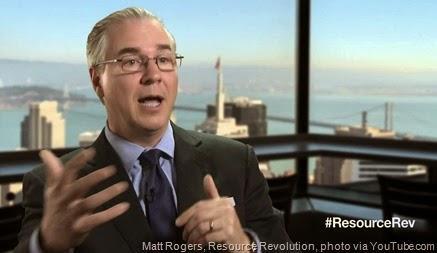 The cost of entry for an aspiring entrepreneur has never been lower, and the total wealth of opportunities has never been larger. You can start a new e-Commerce site on the Internet for as little as $100, with cheap smart phone apps, new technology innovations, or tapping the multitude of opportunities brought by capitalizing on our concern for dwindling natural resources.
The cost of entry for an aspiring entrepreneur has never been lower, and the total wealth of opportunities has never been larger. You can start a new e-Commerce site on the Internet for as little as $100, with cheap smart phone apps, new technology innovations, or tapping the multitude of opportunities brought by capitalizing on our concern for dwindling natural resources.
A while back, I focused on the e-Commerce side, so this time I wanted to highlight how a shortage of something, like natural resources, should be seen by an aspiring entrepreneur as a wealth of new startup ideas. I was inspired by a new book, “Resource Revolution: How to Capture the Biggest Business Opportunity in a Century,” by Stephan Heck and Matt Rogers.
Based on their work in CleanTech and sustainability, Heck and Rogers outline five principles for existing companies to apply to current practices and processes for dramatic efficiency improvements in the use or production of resources. I have recast these principles here for new entrepreneurs and startups, who thrive on change, to show the wealth of opportunities for them:
-
Substitute new materials for scarce natural resources. Entrepreneurs have huge opportunities to deliver higher-performance materials at lower cost, like carbon fiber for steel. These will not only save some weight, but build better vehicles, and improve the environment. Consider the startup MarkForged, which takes carbon-fiber to a 3D printer.
-
Eliminate waste throughout existing processes. Mature companies often lose sight of scrap and changeover time in existing systems. Entrepreneurial minds can more easily see energy, water losses, and inefficient material usage. For example, a startup named Dirtt has been able to take reusable building components to a whole new level.
-
Upgrade, reuse, or recycle every product. Make every product a natural loop, from creation to use to recycle to reuse. The tighter the loop, the greater the value captured and the stronger the competitive differentiation. Reusing a phone, like the ecoATM story, is more valuable than reusing a chip, or just extracting the gold and silver.
-
Optimize existing product efficiency, safety, and reliability. Sadly, cars are parked 96% of the time, and shipping containers takes lots of space while empty. You don’t have to be an aspiring entrepreneur to see opportunities for improvement. Startups like Uber for cars, and Staxxon for containers are already there, but these are only the beginning.
-
Move physical products and services into the digital realm. Steve Jobs has led the way here, by turning music, movies, cameras, and flashlights into apps. The opportunity is to reinvent whole products and whole industries, making things ten times better in the process. This not only saves scarce natural resources, but adds value to the economy.
Relative to all these principles, the “big three” of scarce natural resources consist of land (food), water, and energy. The stark reality is that the people and businesses of the world need to produce more with less in all these areas, while eliminating wasteful practices and policies. The effort has started, but there is still a huge need in all areas.
A key fact for both startups and existing businesses is that we have more than 2.5 billion people in developing countries to support who need to be moving out of poverty and into industrial and service occupations by 2030. This number almost doubles the number who have already moved into the middle class and urbanized. These will be your customers, and your competitors.

